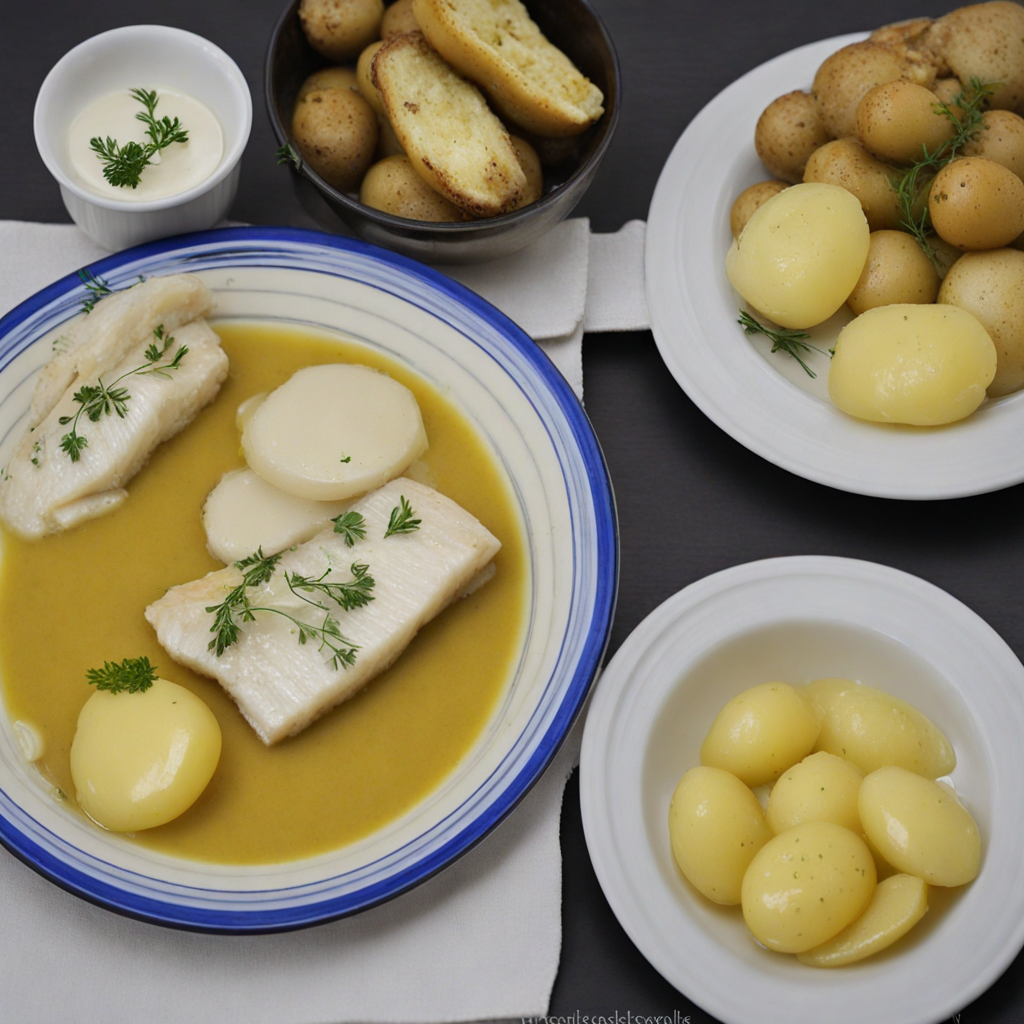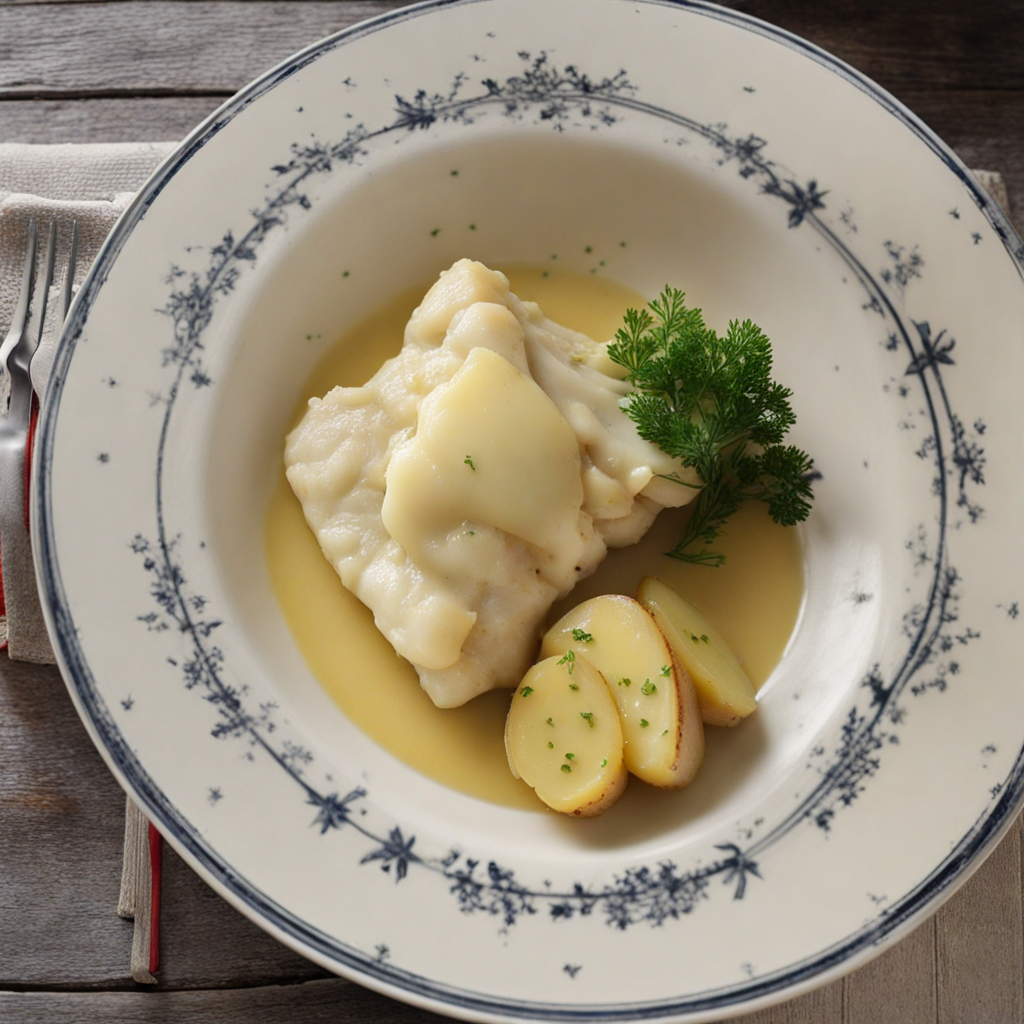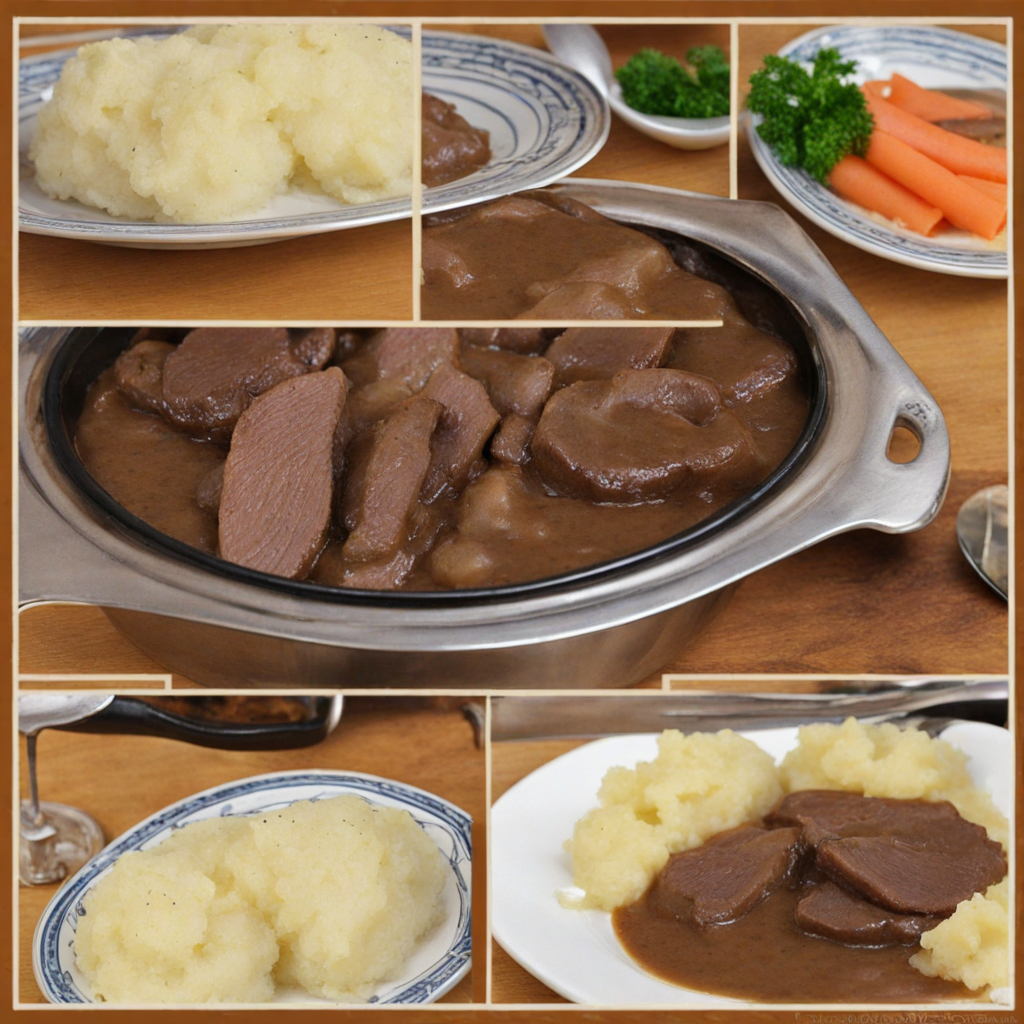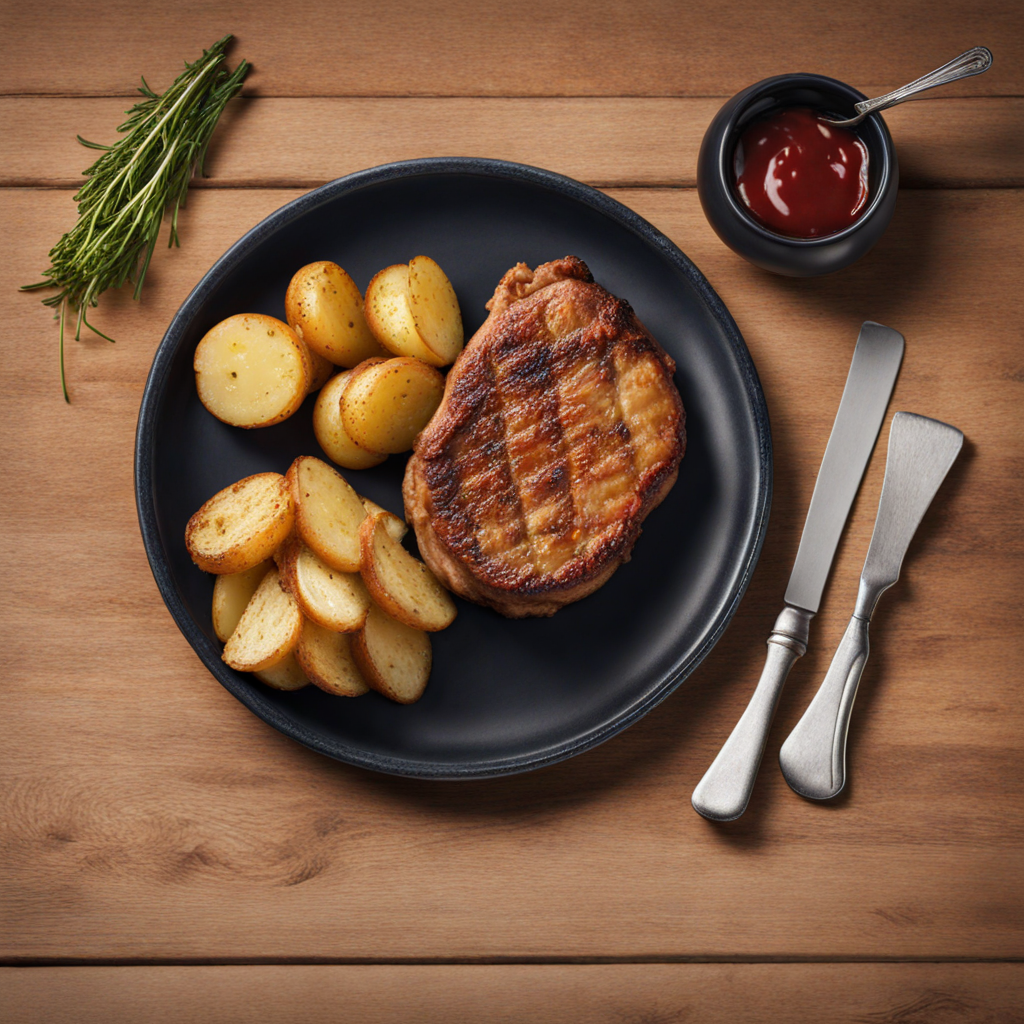Kogt Torsk
Kogt Torsk, or boiled cod, is a traditional Danish dish that embodies the essence of Scandinavian cuisine. This dish features tender, flaky cod that is gently simmered to perfection, allowing its delicate flavors to shine through. The choice of cod is significant, as it is a staple fish in Danish waters, known for its mild taste and versatile texture. The cooking method emphasizes the fish's natural qualities, resulting in a dish that is both light and satisfying, making it ideal for those seeking a wholesome meal. Typically, Kogt Torsk is served with a variety of accompaniments that enhance its flavor profile. Common pairings include boiled potatoes, which add a heartiness to the dish, and a creamy white sauce made from butter, flour, and milk, often flavored with herbs like dill or parsley. The combination of the succulent fish with the richness of the sauce creates a comforting experience that is both nourishing and flavorful. A sprinkle of fresh herbs on top not only adds a pop of color but also a burst of freshness that complements the dish beautifully. In Denmark, Kogt Torsk is often enjoyed during special occasions or as a part of traditional holiday meals, reflecting the country’s deep-rooted culinary heritage. The simplicity of the dish allows for an appreciation of the high-quality ingredients that are often sourced locally. It invites diners to savor the essence of the sea, making it a delightful introduction to Danish gastronomy. Each bite of Kogt Torsk is not just a taste of food, but a celebration of the culture and culinary traditions of Denmark.
How It Became This Dish
Kogt Torsk: A Culinary Journey Through Danish Tradition Introduction Kogt Torsk, or boiled cod, is a beloved dish in Denmark, representing not only a staple of the Danish diet but also a significant aspect of its culinary heritage. This simple yet savory dish serves as a window into the historical and cultural tapestry of Denmark, revealing how geography, economy, and tradition intertwine to shape the food customs of a nation. Origins The origins of Kogt Torsk can be traced back to the maritime traditions of the Nordic countries. Cod has been a vital fish in the diets of coastal communities for centuries, prized for its abundance and nutritional benefits. Denmark, with its extensive coastline and access to the North Atlantic, has a long-standing relationship with this fish. Historical texts suggest that fishing for cod dates back to the Viking Age (circa 793-1066 AD), when the Norse sailors relied on it for sustenance during their long voyages. In those early days, cod was often dried or salted to preserve it for long journeys. However, as preservation techniques evolved and food availability improved, boiling became a popular method of preparation. By the 18th century, Kogt Torsk was firmly established as a dish within Danish households, particularly among the fishing communities of Jutland and the islands. Cultural Significance Kogt Torsk is not merely a dish but a symbol of Danish identity. It reflects the country’s deep connection to the sea and the natural bounty it provides. The dish is often associated with special occasions and gatherings, particularly during the Christmas season and Easter, when families come together to share meals that honor their heritage. In Danish culture, food plays a pivotal role in social interactions. Kogt Torsk is typically served with a variety of accompaniments, such as boiled potatoes, melted butter, and a sprinkle of fresh herbs like dill or parsley. These elements not only enhance the flavor but also create a communal experience around the dining table, where family and friends gather to enjoy the meal together. Moreover, Kogt Torsk is a dish that showcases the Danish philosophy of ‘hygge,’ which emphasizes coziness and comfort in everyday life. The simplicity of boiled cod, paired with home-cooked sides, embodies the essence of this cultural concept, making it a cherished comfort food for many Danes. Development Over Time As Denmark moved through the centuries, the preparation and consumption of Kogt Torsk underwent various changes, mirroring broader societal shifts. In the 19th century, the Industrial Revolution brought about significant advancements in food production and preservation methods. This era saw the rise of commercial fishing and the transportation of fresh fish to urban centers, making Kogt Torsk more accessible to a wider population. During this period, Danish cuisine began to evolve, influenced by international trends and culinary exchanges. The introduction of new ingredients and cooking techniques allowed for experimentation with traditional recipes. Chefs started incorporating spices and flavors from other cultures, enriching the presentation and taste of Kogt Torsk. While the traditional boiled cod remained a staple, variations began to emerge, such as adding creamy sauces or serving it with pickled vegetables. The 20th century brought further changes to the dish as Denmark experienced modernization and globalization. The rise of fast food and convenience meals posed challenges to traditional cuisines; however, there was also a counter-movement that sought to preserve and celebrate local foods. The New Nordic Cuisine movement, which began around the early 2000s, emphasized the use of local, seasonal ingredients, and traditional recipes. Chefs began reinterpreting classic dishes like Kogt Torsk, presenting them in innovative ways while respecting their roots. Today, Kogt Torsk remains a staple in Danish homes and restaurants, celebrated for its simplicity and flavor. Modern chefs often showcase it in contemporary dining settings, pairing it with artisanal breads, gourmet butters, or innovative sauces while maintaining the dish’s traditional essence. Food festivals and culinary events also highlight Kogt Torsk, reinforcing its status as a national treasure. Kogt Torsk in Contemporary Denmark In contemporary Denmark, Kogt Torsk is enjoyed by both young and old, transcending generational divides. Educational initiatives have emerged to teach younger generations about traditional Danish cooking, ensuring that iconic dishes like Kogt Torsk are preserved and appreciated. Home cooks often share family recipes, passing down the love and knowledge of this cherished dish. Moreover, Kogt Torsk has found its way onto international menus, showcasing Danish cuisine’s global reach. As culinary tourism grows, visitors to Denmark are often introduced to Kogt Torsk, allowing them to experience the flavors of the region and understand its cultural significance. This exchange not only promotes Danish food but also fosters a greater appreciation for sustainable fishing practices and local ingredients. Conclusion Kogt Torsk is more than just boiled cod; it is a dish steeped in history and cultural significance. Its journey from the Viking Age to contemporary dining tables illustrates the resilience of Danish culinary traditions in the face of changing times. As Danes continue to cherish this simple yet flavorful dish, Kogt Torsk serves as a symbol of national identity, community, and the enduring connection between people and their food. Through its evolution, Kogt Torsk stands as a testament to the importance of food as a cultural artifact that tells the story of a nation, its people, and their relationship with the sea. Whether enjoyed at a festive gathering or a quiet family dinner, Kogt Torsk remains a beloved part of Denmark’s culinary landscape, embodying the spirit of hygge and the rich heritage of the Danish people.
You may like
Discover local flavors from Denmark







